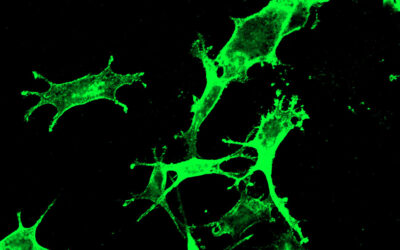New, advanced materials are often driver of technologies, especially for aeronautics applications. Many materials have been developed to resist severe working conditions which usually couple high temperature and mechanical stress corrosion. For these applications, non-oxide ceramics are promising materials, in particular transition metal carbides, for instance zirconium carbide (ZrC), because of their high melting point.
Unfortunately, ZrC exhibit a low oxidation resistance. A ZrC-SiC composite material may be a way to overcome this drawback, as silicon carbide forms a passive silica layer at high temperature under oxidizing conditions. The coupling of these properties could lead to ceramics resistant to high temperatures in oxidizing atmospheres.
For the synthesis of ZrB2-SiC composites a polymer-derived ceramic route has already been applied successfully. It seems to be promising that this synthesis route is also applicable for ZrC-SiC. The method rests on the synthesis of a hybrid material in which a powder of ZrC is coated by a SiC precursor polymer and after pyrolysis, on the elaboration of a composite with a homogeneous microstructure. However, for these systems, organic-inorganic interactions as well as mechanisms of polymerizations and thermal/ chemical cross-linking have not been investigated until now. Scientists of the University of Limoges have implemented a polymer-derived ceramics route approach to obtain new ZrC-SiC composites.
Limoges has a long porcelain tradition dated back to 1768. Today, more than 50% of all porcelain made in France comes from Limoges. At the renowned ‘Laboratoire Science des Procédés Céramiques et de Traitements de Surface’ the researchers selected different SiC precursor polymers to generate the composite and to study the material. They investigated the mechanisms of thermal and chemical cross-linking, as well as the thermal behaviour of the polymers. The key point of this approach was the use the polymers synthesized from a vinylsilane monomer, to enhance organic–inorganic interactions between the ZrC mineral phase and the polymer.
The French researchers obtained a promising yield and microstructural homogeneity of the materials. XRD analysis indicated the formation of a β-SiC phase in presence of ZrC. SEM observations emphasized the role of the polymer structure on the final microstructure. Further investigations are presently continuing towards the sinterability of these systems.
Image: Le Petit Poulailler

















